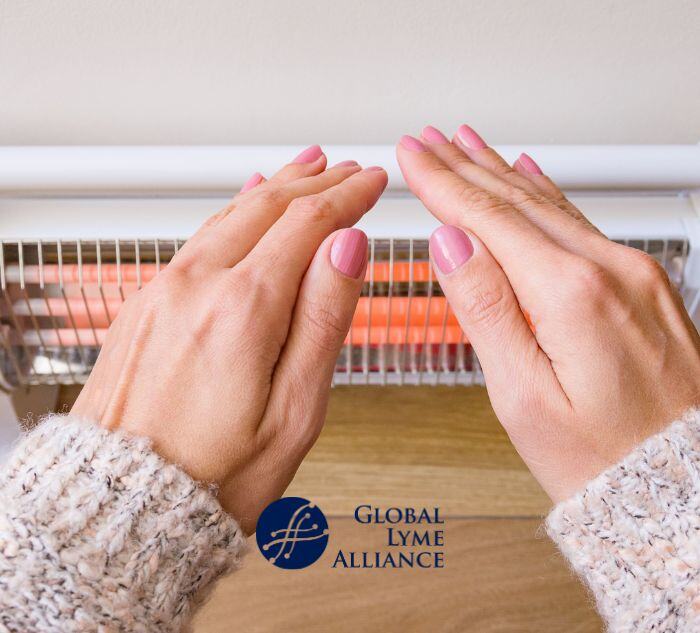
Learn about the connection between Raynaud's Syndrome and Lyme Disease. Discover symptoms, causes, and treatment options.
Have you ever noticed your fingers turn white, then blue, when exposed to cold or during periods of stress? Do they sometimes go numb, and then get tingly and red when sensation comes back? These can be signs of a syndrome called Raynaud’s. Did you know that this syndrome can be connected to Lyme disease? Let’s walk through what Raynaud’s disease is, what causes it, and why it’s important to consider Lyme when experiencing Raynaud’s symptoms.
What is Raynaud’s Syndrome?
Raynaud’s syndrome is a functional peripheral arterial disease. Small blood vessels in extremities—usually fingers and toes, but sometimes the nose, lips, earlobes, or even nipples—have episodic spasms called vasospastic attacks. These spasms cause the arterioles and capillaries in the extremities to constrict. As a result, the appendage will first turn white due to reduced blood flow, then blue due to oxygen depletion.
Raynaud’s can affect just one extremity, or even just parts of one like a patch of a finger, or it can affect multiple extremities. It is commonly brought on by cold or stress. An attack usually lasts about 15 minutes. During a Raynaud’s attack, the extremity may feel numb. Rewarming the affected area will bring sensation back. As this happens, the area will turn red and may tingle, throb, or feel hot. Some people may experience swelling or pain.
What Causes Raynaud’s Syndrome?
There are two types of Raynaud’s syndrome. The first, primary Raynaud’s, has no apparent cause. Primary Raynaud’s is more common, with 60-90% of cases occurring in women ages 15-40.
Secondary Raynaud’s syndrome is usually associated with an underlying condition that causes the syndrome. These conditions can be an injury, past exposure to frostbite, or autoimmune disorders like lupus or rheumatoid arthritis. Connective tissue disorders like Sjogren’s syndrome, arterial diseases like atherosclerosis, pressure on the major nerve to the hand, and smoking can all increase risk for secondary Raynaud’s syndrome. Secondary Raynaud’s is less common, usually occurring in people over 40, and is more severe.
The Link Between Lyme and Raynaud’s
Both Raynaud’s syndrome and Lyme disease can impact circulation. Lyme disease can cause autoimmune-like symptoms that can be similar to Raynaud’s or can be mistaken for autoimmune disease (Lyme disease is known as “the great imitator.”) Because secondary Raynaud’s syndrome is caused by underlying conditions, Lyme disease should always be considered as a possible culprit.
A case study documented a 38-year-old woman with severe Raynaud’s symptoms. Testing showed that she had underlying Lyme disease, causing secondary Raynaud’s syndrome. While other anecdotal cases exist, more research is needed on a link between Lyme disease and Raynaud’s syndrome.
How is Raynaud’s syndrome treated?
Primary Raynaud’s syndrome is usually mild and may go away on its own. Stopping risk factors like smoking and repetitive pressure on the hand can help, as can avoiding triggers like stress and cold. Secondary Raynaud’s may clear up when the underlying condition is treated. In the case of the 38-year-old woman with Lyme disease, her Raynaud’s symptoms resolved after her Lyme infection was treated with eight weeks of antibiotics, antivirals, and multivitamins.
***
Sources:








-2.jpg)